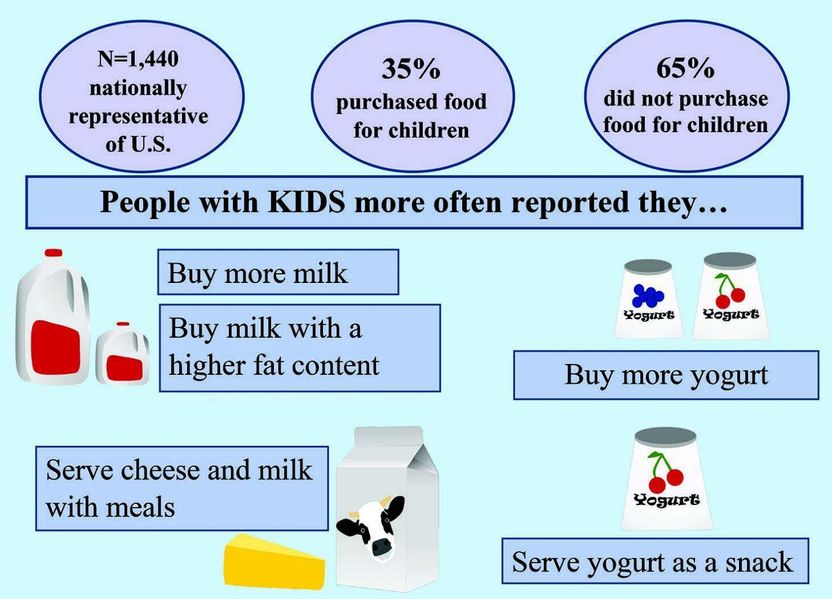Dairy product purchasing differs in households with and without children
Households with children buy larger quantities
American dairy consumers are often influenced by a variety of factors that can affect their buying habits. These factors include taste, preference, government information, cultural background, social media, and the news. In an article appearing in JDS Communications, researchers found that households that frequently bought food for children are interested in dairy as part of their diet and purchased larger quantities of fluid milk and more fluid milk with a higher fat content.

A new study published in JDS Communications found that households with children reported purchasing larger quantities and higher-fat dairy products compared to households without children.
JDS Communications
To assess the purchasing habits of households that purchase food for children versus those that do not, researchers from Purdue University and Oklahoma State University collected data through an online survey tool, Qualtrics. Respondents, required to be 18 years of age or older, were asked a variety of questions to collect demographic information and dairy product purchasing behavior from US residents. Kantar, an online panel database, was used to obtain participants through their opt-in panel database. "The sample was targeted to be representative of the US population in terms of sex, age, income, education, and geographical region of residence as defined by the US Census Bureau (2016)," said author Mario Ortez, PhD student at Purdue University in West Lafayette, IN, USA.
The survey received a total of 1,440 responses to be assessed. Per the results, 511 respondents indicated they frequently purchased food specifically for children, whereas 929 indicated they did not. Of the 1,440 respondents, 521 indicated that they had at least one child in the household, and 912 indicated they did not have children in their household. The study found that households that frequently purchased food for children generally purchased larger quantities of fluid milk, along with their chosen fluid milk having a higher fat content. Households with children also bought yogurt more frequently than other households.
Other findings from the survey indicated that cheese and milk are most often purchased for part of a meal, and yogurt is bought most frequently as a snack. The survey also found that households largely reported reviewing product attributes of price, expiration date, and nutritional information (in that order) on egg, milk, and meat labels.
"This study demonstrates the continued belief among American consumers that dairy products are an important part of a healthy diet fed to children. The popularity of whole milk, cheese, and yogurt within these households suggests that children enjoy the taste of dairy products and are happy to have them served during regular meals and at snack time," said Matthew Lucy, PhD, Editor-in-Chief of JDS Communications, University of Missouri, Columbia, MO, USA. These findings can influence product marketing efforts and stakeholder decisions in the dairy industry.
"Future studies can build on this work by evaluating whether there is a spillover effect from purchasing specifically for children and the general dairy and protein product purchasing habits of those households," said Dr. Courtney Bir, PhD, coauthor of the study and assistant professor, Oklahoma State University, Stillwater, OK, USA.
Policy makers and companies can use this information to help inform product labeling and better target necessary segments to increase product awareness and better the dairy industry as a whole.
Most read news
Other news from the department science

Get the food & beverage industry in your inbox
By submitting this form you agree that LUMITOS AG will send you the newsletter(s) selected above by email. Your data will not be passed on to third parties. Your data will be stored and processed in accordance with our data protection regulations. LUMITOS may contact you by email for the purpose of advertising or market and opinion surveys. You can revoke your consent at any time without giving reasons to LUMITOS AG, Ernst-Augustin-Str. 2, 12489 Berlin, Germany or by e-mail at revoke@lumitos.com with effect for the future. In addition, each email contains a link to unsubscribe from the corresponding newsletter.















































